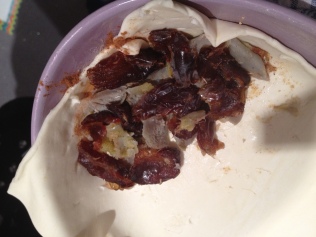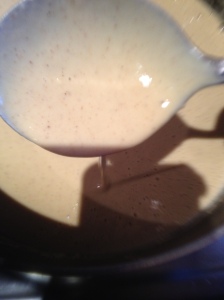
Stuart Gingerbread Moulds
Early modern gingerbread is extremely different to modern gingerbread biscuits. It is made from finely grated white bread mixed with lots of honey. (There is also another early modern incarnation of gingerbread made of a mix of ginger, sugar, water, and almonds left to dry). If you have a mould and some edible glitter, you can make it look nice (see e.g. http://www.godecookery.com/ginger/ginger.htm). The addition of sandalwood essence (for the sandalwood bark – ‘saunders’ – used by Hannah Woolley) is good, if you can find any – sandalwood essential oil is edible.
Ingredients:
2 cups honey
3 cups finely grated breadcrumbs
1 cup red wine
4 tsp ginger
1 tsp cinnamon
1 tsp allspice
1/4 tsp pepper
pinch of aniseed
couple of drops of sandalwood essence (optional)
flour or ground almonds to thicken as needed
Method:
Heat up the honey and stir in all the other ingredients. If it doesn’t make a thick paste as it is, add some flour or ground almonds. Leave to cool slightly, then bake in the oven at 180 degrees centigrade for 15 minutes. Sprinkle with cinnamon.
Main recipes we used:
To make Ginger-bread.
Take a quart of Honey, and set it on the coals and refine it, then take Ginger, Pepper, and Licorise of each a penny-worth, a quarter of a pound of Anniseeds and a penny-worth of Saunders; beat all these and searce them, and put them into the Honey, add a quarter of a pint of Claret-Wine, or old Ale, then take three penny Maunchets finely grated, and strew it amongst the rest, and stir it till it come to a stiff paste, make them into Cakes and dry them gently (Hannah Woolley)
To make fine Gingerbread:
Take three stale Manchets, grate them, dry them, and beat them; then sif
them thorow a fine sieve; then put to them one ounce of Ginger beaten and searced fine, as much Cinnamon, half an ounce of Aniseeds, and half an ounce of Liquorice, half a pound of sugar; boyll all these together with a quart of Claret Wine till it come to a stiffe paste; then mould it on a Table with a little Flower, and roul it very thin, and print it in moulds; dust your moulds with some of your powdered spices. (Hannah Woolley, Rare Receipts for cookery , 167o)
To make drie Gingerbread.
Take halfe a pound of almonds and as much grated cake, and a pounde of fine sugar, and the yolke of two newe laid egges, the iuyce of a Lemmon, and 2 graines of muske, beate all these together till they come to a paste, then print it with your molds, and so dry it vpon papers in an ouen after your bread is drawne. (Sir Hugh Plat, Delights for Ladies, 1602)
























